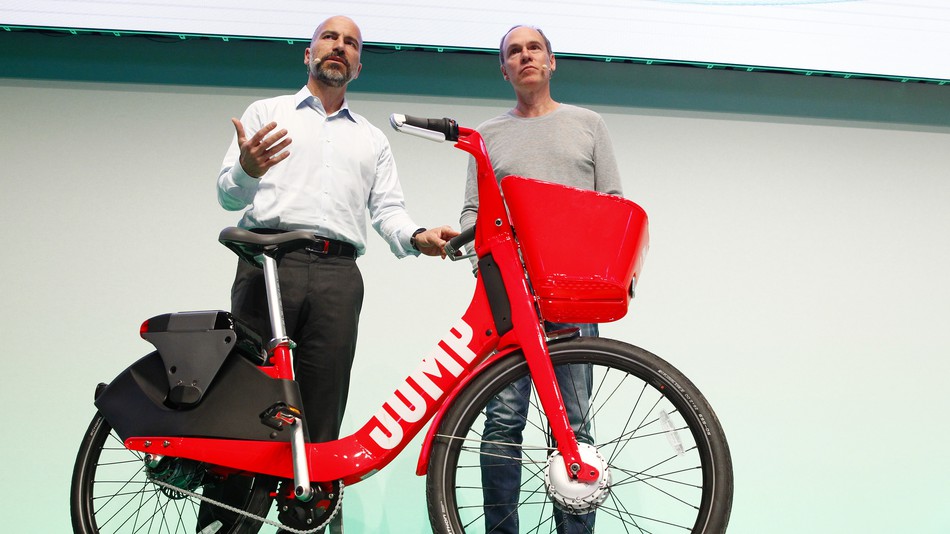/https%3A%2F%2Fblueprint-api-production.s3.amazonaws.com%2Fuploads%2Fcard%2Fimage%2F835115%2F1014e8b8-4b51-4508-955e-aa8e8a195f71.jpg)
Uber is a ride-hailing app, but lately it’s become an app for riding an electric bike or scooter, renting a car, and even checking when the bus is coming.
In an interview released over the weekend in the Financial Times, Uber CEO Dara Khosrowshahi emphasized his goal of turning Uber into a diverse mobility platform. Translation: He wants the app to offer passengers as many different ways to get around as possible. It’s not just about ordering a car.
In the interview, Khosrowshahi said, “During rush hour, it is very inefficient for a one-ton hulk of metal to take one person 10 blocks.” Instead, he’d like passengers to get on a bicycle or an e-scooter. It’s quicker and easier.
He admitted the two-wheeled vehicles come at a short-term cost and frustrate drivers. But long-term it’ll be worth it, he said. (Note: This is the company that lost $4.5 billion last year.)
“We are willing to trade off short-term per-unit economics for long-term higher engagement,” he explained in the interview.
For drivers, this means fewer short rides when would-be customers opt for a scooter trip, but more long, higher-cost pick-ups — and hopefully less congested roads.
In the past few months, Uber’s acquired Jump bikes to offer pedal-assisted rides for short distances and partnered with Lime, an e-scooter rental service.
Lyft also has come out strongly in favor of bicycles and scooters in recent weeks. Uber’s ride-hailing competitor acquired bike-share provider Motivate, and Lyft is developing its own line of e-scooters.
In a post last month, Lyft’s co-founders wrote about using bikes and scooters for the first- and last-mile problem: those shorter trips from the train station to the office, for instance.
At this point, the ride-hailing apps just want to get people around. It doesn’t matter if it’s in a car or not.


